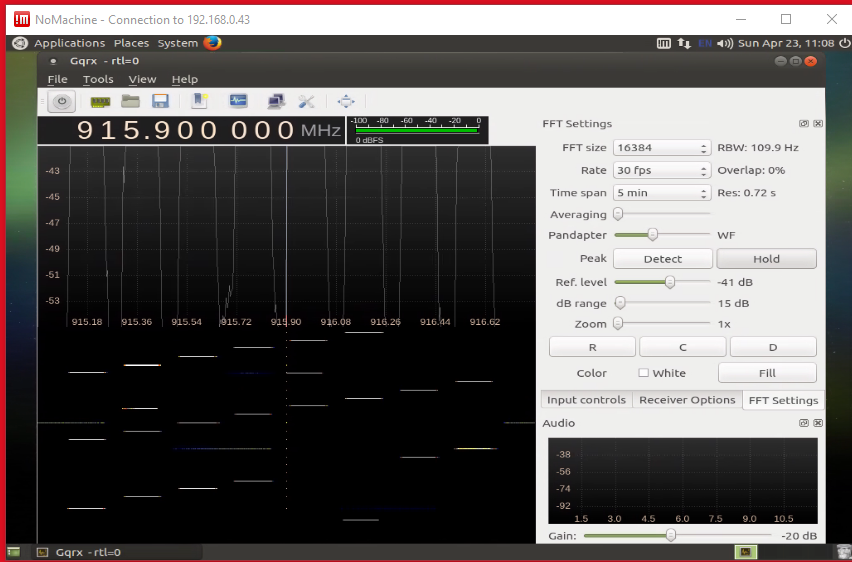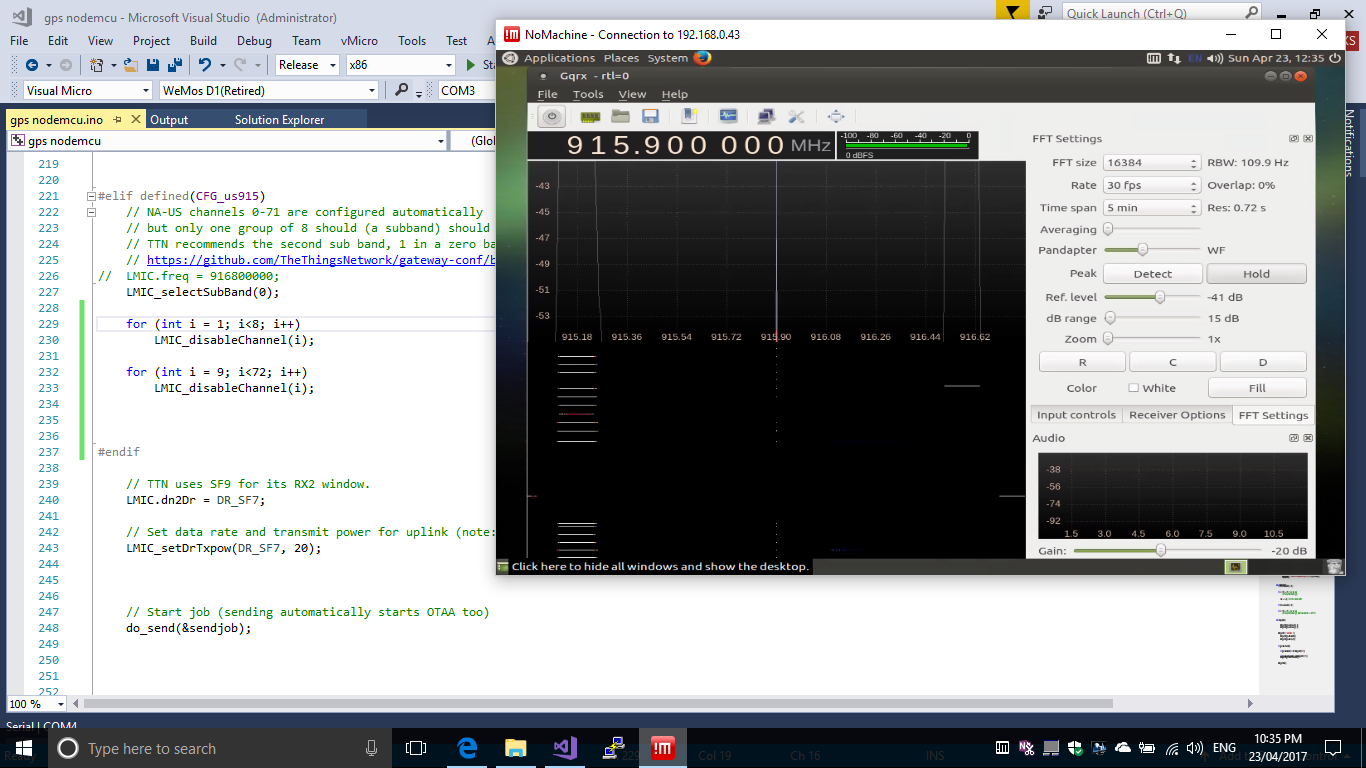The LMIC driver I am using supports only the EU and the USA however you can fool the driver to use the frequencies you need.
Here is the configuration I use the the USA. It is not ideal for you for a number of reasons, e.g. it does
not cover setting the TX power in the event the max Tx power in Australia is lower than the allowed
max Tx power in the US. The max Tx power is defined in the lmic.h file with the constant MAX_TXPOW_125kHz
Here are the relevant sections from my LMIC.c configuration of Arduino UNO and Wemos D1 (Rev 1) boards.
THIS SECTION IS THE PINMAP. The UNO is commented out and the Wemos is active
/*
// This pin map is for a Arduino UNO fitted with a Dragino Lora Shield V1.3/V1.4
// The shield has jumpers J_DIO1 and J_DIO2 installed and J-DIO5 removed
// Jumpers SV-2, SV-4 and SV3 are jumpered such that the jumpers are installed closest to the edge of the PCB
const lmic_pinmap lmic_pins = {
.nss = 10,
.rxtx = LMIC_UNUSED_PIN,
.rst = 9,
.dio = {2, 6, 7},
};
*/
// Wemos D1 (Rev 1) pin mapping and jumper settings for use with Dragino Lora Shield Rev 1.3
// Lora Shield - install jumpers SVx such that the jumpers are installed closest to the edge of the PCB
// Lora Shield - remove jumpers J_D101, J_D102, J_D105
// Add link from J_D101 pin closest to the aerial connector to D3 on the Arduino header
const lmic_pinmap lmic_pins = {
.nss = 15, // CS
.rxtx = LMIC_UNUSED_PIN, // For placeholder only, Do not connected on RFM92/RFM95
.rst = 2, // Needed on RFM92/RFM95? (probably not) D0/GPIO16
.dio = {16, 5, LMIC_UNUSED_PIN}, // Specify pin numbers for DIO0, 1, 2
};
THIS IS THE SECTION FOR THE SINGLE CHANNEL CONFIGURATION.
The LMIC driver I am using supports only the EU and US frequencies
YOU SHOULD MODIFY THE CFG_us915 section to fool the LMIC driver
You do this by finding the BAND in the US spectrum that the frequency
you want to use is mapped to and then use it in the LMIC_selectSubBand() function. The US configuration
has only two bands (0 and 1) so I do not think you need to change the current value
Then work out what the offset of you frequency from the start of the US frequency range and configure
the two “for loops” setting the LMIC_disableChannel(i); such that the desired channel is the only one that
is not disabled.
#if defined(CFG_eu868)
.......
.......
#elif defined(CFG_us915)
// NA-US channels 0-71 are configured automatically
// but only one group of 8 should (a subband) should be active
// TTN recommends the second sub band, 1 in a zero based count.
// https://github.com/TheThingsNetwork/gateway-conf/blob/master/US-global_conf.json
LMIC_selectSubBand(1);
for (int i=0;i<8;i++)
LMIC_disableChannel(i);
for (int i=9;i<72;i++)
LMIC_disableChannel(i);
#endif

 Let me know if you want help!
Let me know if you want help!
